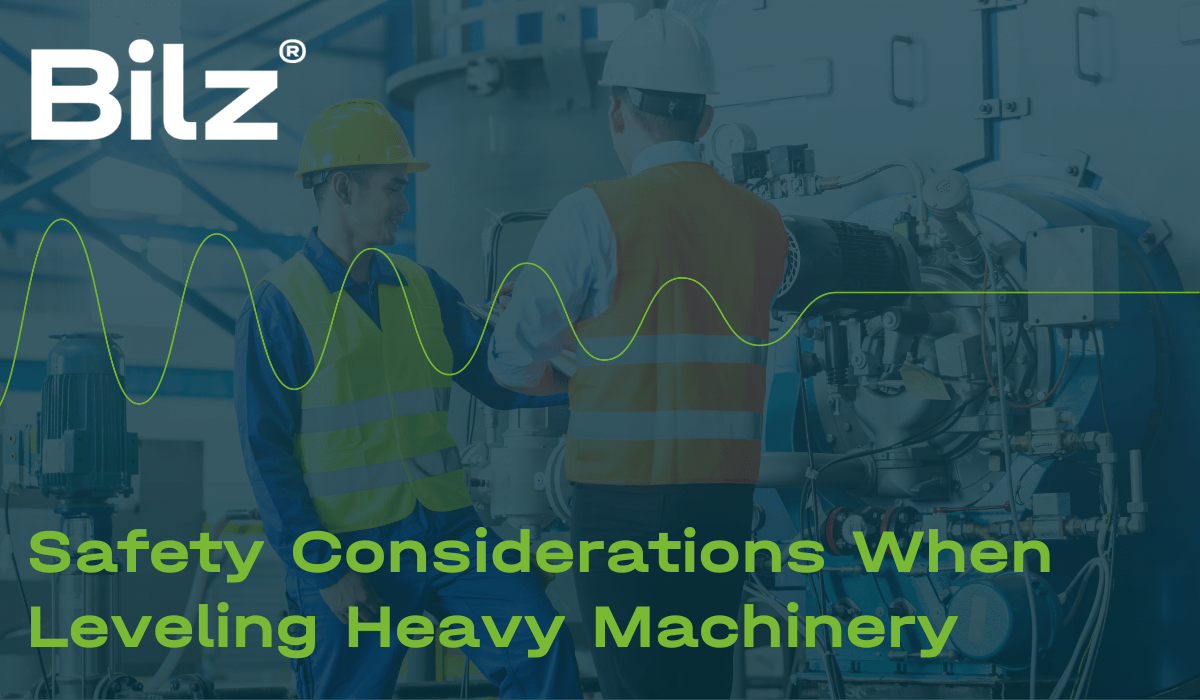The leveling of heavy machinery is not just a task of precision; it’s a significant safety concern. Ensuring that heavy equipment is properly leveled is critical for the safety of operators and the longevity of the machinery itself. This blog post will discuss the essential safety considerations and best practices to keep in mind when leveling heavy machinery, aiming to mitigate risks and ensure a safe working environment.
Personal Protective Equipment (PPE)
Before any leveling task begins, ensuring that all personnel involved are equipped with the appropriate PPE is paramount. This includes:
- Safety Helmets: To protect against head injuries from accidental drops or bumps.
- Steel-toed Boots: To safeguard feet against crushing injuries should heavy components shift or fall.
- Gloves: To protect hands during the handling of leveling tools and machinery.
- Eye Protection: To guard against flying debris or spills during the leveling process.
Understanding the Equipment
Familiarity with the machinery and the tools used for leveling is crucial. Operators should be thoroughly trained on:
- The specific machinery being leveled, including any potential hazards associated with its operation or movement.
- The correct use of leveling tools such as hydraulic jacks, torque wrenches, and leveling wedges, including their load capacities and operational limits.
Proper Use of Leveling Tools
The tools used in the leveling process, particularly hydraulic jacks and torque wrenches, must be handled with care:
- Always check the load rating of jacks and ensure they are not exceeded.
- Use torque wrenches within their recommended settings to avoid over-tightening and potential damage to leveling components.
- Ensure all tools are in good working condition before use, checking for signs of wear or damage.
Securing the Area
The area where leveling is taking place should be secured and marked to prevent unauthorized or unaware individuals from entering:
- Use barriers or tape to delineate the work area.
- Place warning signs to indicate that heavy machinery leveling is in progress.
- Ensure that the work area is well-lit and free of unnecessary clutter that could pose tripping hazards.
Team Communication
Effective communication among team members is vital during the leveling process:
- Use clear, concise commands when coordinating adjustments.
- Employ a spotter if necessary to provide a better view of adjustments being made and to ensure safety from all angles.
- Utilize walkie-talkies or other communication devices in environments where noise levels might impede verbal communication.
Emergency Preparedness
Always have a plan in place for dealing with emergencies:
- Ensure all team members are trained in first aid.
- Have emergency contact numbers readily available.
- Know the location of the nearest fire extinguisher and first aid kit.
Regular Training and Refresher Courses
Given the potential risks involved in leveling heavy machinery, regular training sessions and refresher courses are essential to keep all personnel up to date on the latest safety protocols and techniques.
Conclusion
The leveling of heavy machinery is a task that carries inherent risks, making the adherence to safety protocols and best practices non-negotiable. By equipping personnel with the necessary PPE, ensuring familiarity with the equipment and tools, securing the work area, maintaining clear communication, and being prepared for emergencies, the risk of accidents can be significantly reduced. Safety is not just a responsibility but a critical component of successful and efficient machinery installation and maintenance.

